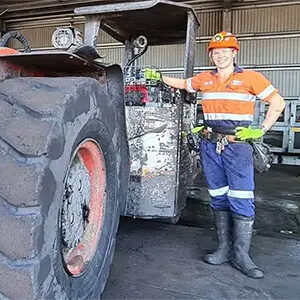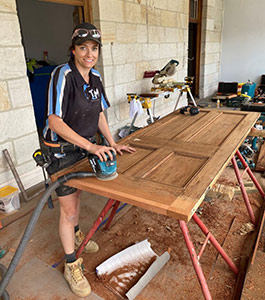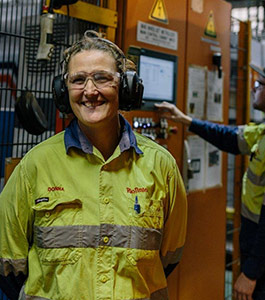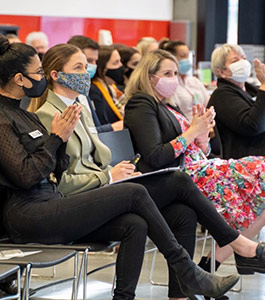With women’s participation in trades at just 2%, it is vital that organisations increase the number of women working in trades roles to increase innovation, diversity of ideas and bottom-line performance. Employers often ask Tradeswomen Australia how they can get more women through the doors of their organisation, and we think it starts with the job advertisement itself.
When advertising a role, make sure that the advertisement signals that the workplace would be an inviting environment for women to work. Due to the prejudice and negative stereotypes that exist about women in trade, finding a suitable workplace can be an overwhelming experience.
Melissa Martini who is a second-year fitter and turner apprentice expressed her anxieties before getting into her trade saying, “I thought to myself that I can’t go into a trade. How would I survive?!”.
To ensure that women feel invited to join an organisation, it is essential that job adverts use gender neutral language and advertise that they are an equal opportunity employer. This can be done by including a sentence that states diversity and inclusion is an important and valued element of the organisation and encouraging applicants from diverse backgrounds to apply. Additionally, if using imagery of the organisation in the job ad, ensure the imagery used has people from diverse backgrounds so applicants can already see themselves represented at the organisation.
Finally, ensure job ads are visible on a diverse range of recruitment sites; for example, the Tradeswomen Australia Jobs Portal, Work180 and Indigenous Employment Australia. In doing so, the chances of expanding your candidate pool to include women from diverse backgrounds will be significantly increased as you have highlighted that job support is a priority for your organisation.
It is not enough to get women through the door. Once a woman is recruited, it is essential that the organisational culture that she works in is a positive one.
Rachael Keiley, who is a registered plumber, would often be subjected to derogatory remarks in the workplace such as “Oh, you’re the boss?”, “I want to speak to a man”, “Where is your husband?” and “Shouldn’t you be at home with the kids?”.
Such microaggressions not only undermined and disrespected Rachael but also reflected the negative attitudes and perceptions of women in trade roles that are unfortunately held in society. To protect and ensure positive workplace relationships, it is vital that employers foster a positive organisational culture where such comments will not be tolerated and where women are equal to their male colleagues.
Further inclusion can be fostered by affording flexible working arrangements to accommodate parental responsibilities, ensuring women have access to toilets with sanitary disposal bins and making sure there is a female or unisex option for workwear available.
These suggestions highlight that your organisation prioritises and recognises the need for job support and the protection of positive workplace relationships. A focus on such work-related factors will not only encourage more women in your candidate pool but also contribute to preventing mental injury in the workplace for all team members.
Though it may be a long time before we witness an equal ratio of men to women in the trades industry, ensuring that these steps are taken will go a long way in inviting women into trades.
References:
Interview with Melissa Martini
Interview with Rachael Keiley
https://www.seek.com.au/employer/hiring-advice/avoid-unconscious-bias-job-ads
https://theundercoverrecruiter.com/job-adverts-diverse-candidates/





